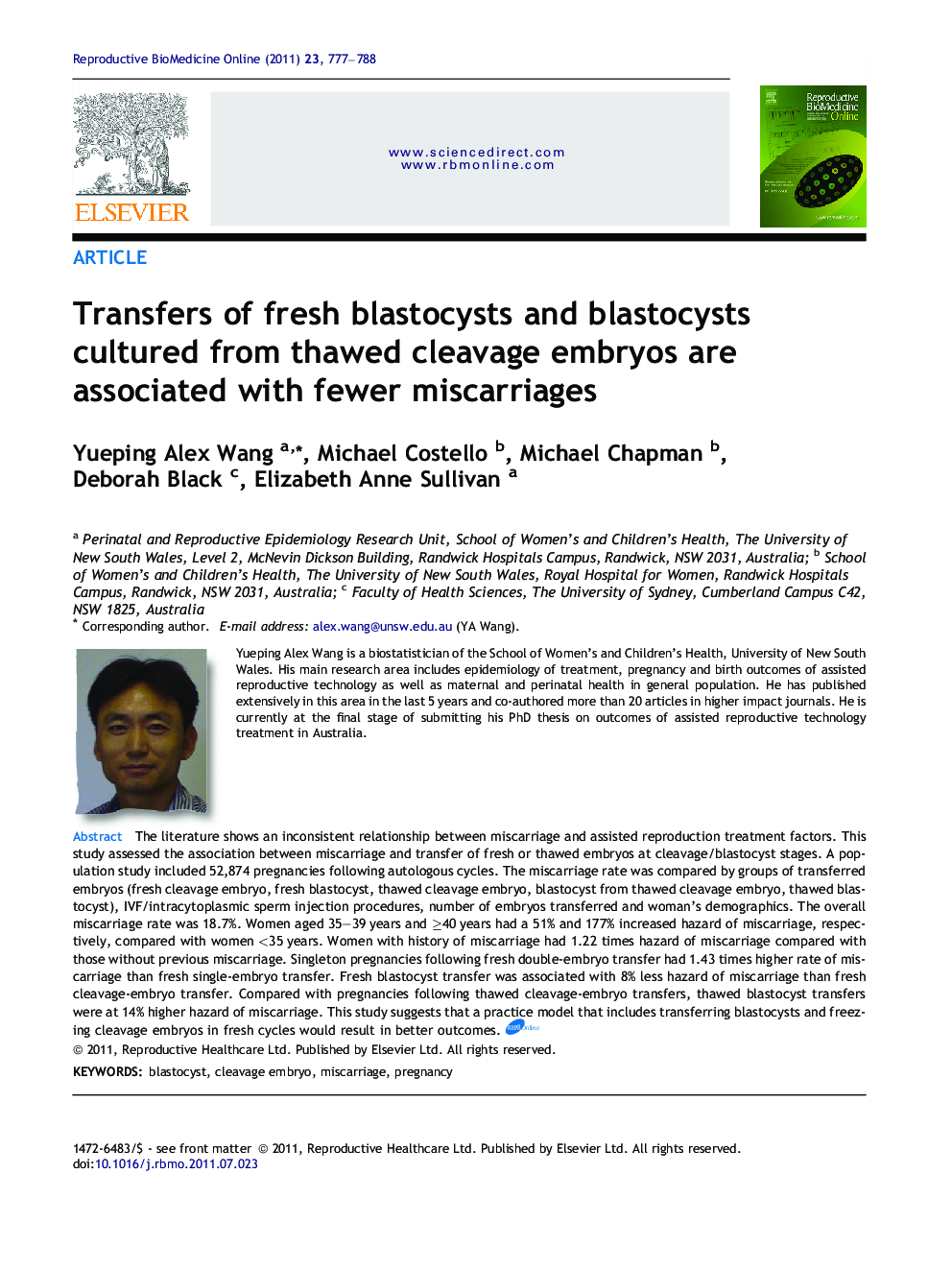| Article ID | Journal | Published Year | Pages | File Type |
|---|---|---|---|---|
| 3971235 | Reproductive BioMedicine Online | 2011 | 12 Pages |
Abstract
Studies show an inconsistent relationship between miscarriage and factors relating to assisted reproduction treatment. Our study assessed the association between miscarriage and transfer of fresh or thawed embryos at cleavage/blastocyst stages, number of embryos transferred, IVF/intracytoplasmic sperm injection (ICSI) and woman's demographics. A population study included 52,874 pregnancies following non-donor (autologous) cycles. The miscarriage rate was compared by groups of transferred embryos (fresh cleavage embryo, fresh blastocyst, thawed cleavage embryo, blastocyst from thawed cleavage embryo, thawed blastocyst), IVF/ICSI, number of embryos transferred and woman's demographics. The overall miscarriage rate was 18.7%. Pregnancies in women aged 35-39 years and ⩾40 years were associated with 1.5 and 2.8 times increased risk of miscarriage compared with those in women aged <35 years. Pregnancies in women with history of miscarriage had 1.2 times higher rate of miscarriage compared with those without previous miscarriage. Singleton pregnancies following fresh double-embryo transfers had 1.43 times higher rate of miscarriage than those following fresh single-embryo transfers. Fresh blastocyst transfer was associated with 8% less risk of miscarriage than fresh cleavage embryo transfer. Compared with pregnancies following thawed cleavage embryo transfers, those following thawed blastocyst transfers had 14% higher risk of miscarriage. There was no significant difference in miscarriage rates between IVF and ICSI. Our study suggested that access to assisted reproduction treatment at a younger age would result in fewer miscarriages and that a practice model that includes transferring blastocyst and freezing cleavage embryos in fresh cycles would result in better outcomes.
Keywords
Related Topics
Health Sciences
Medicine and Dentistry
Obstetrics, Gynecology and Women's Health
Authors
Yueping Alex Wang, Michael Costello, Michael Chapman, Deborah Black, Elizabeth Anne Sullivan,
